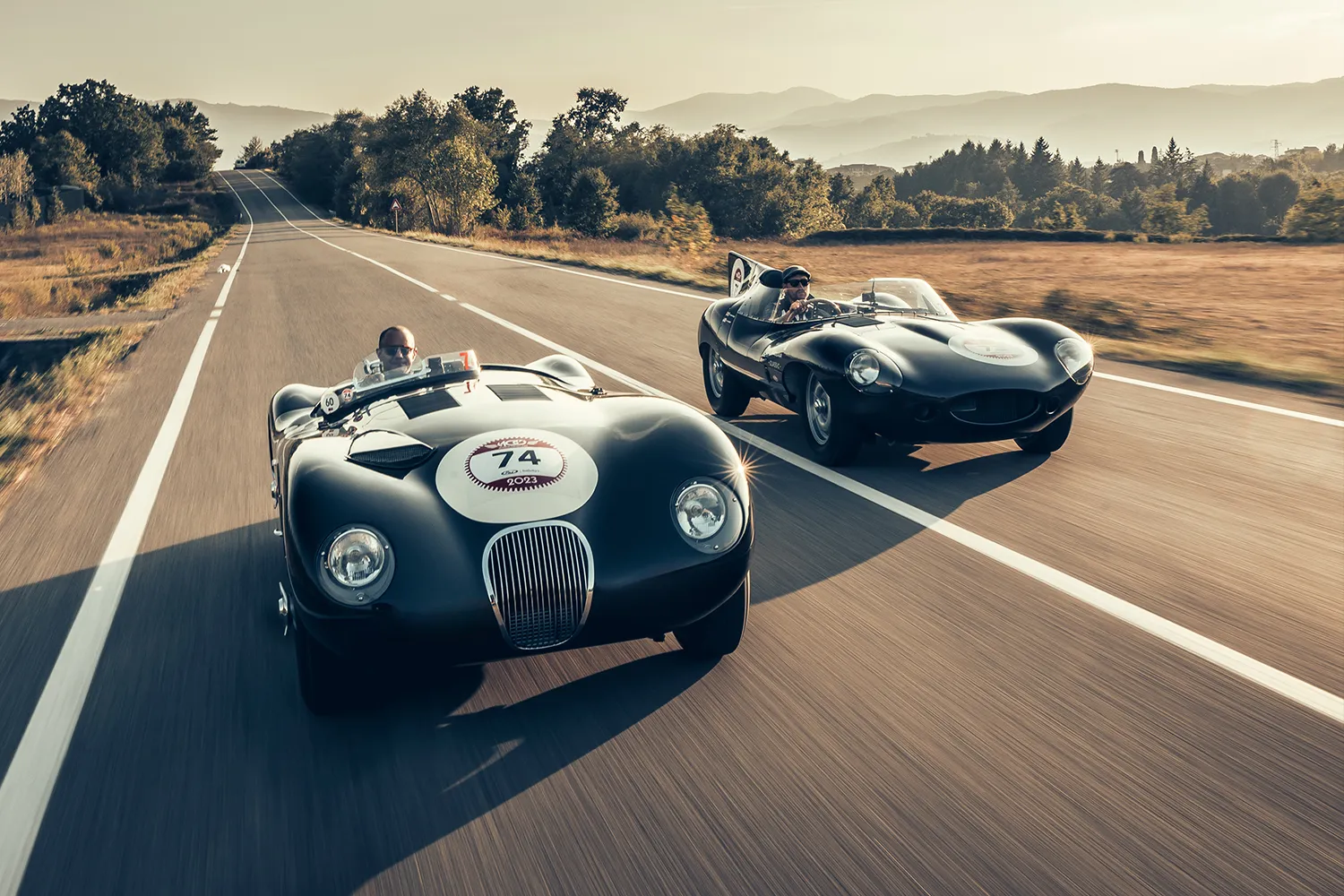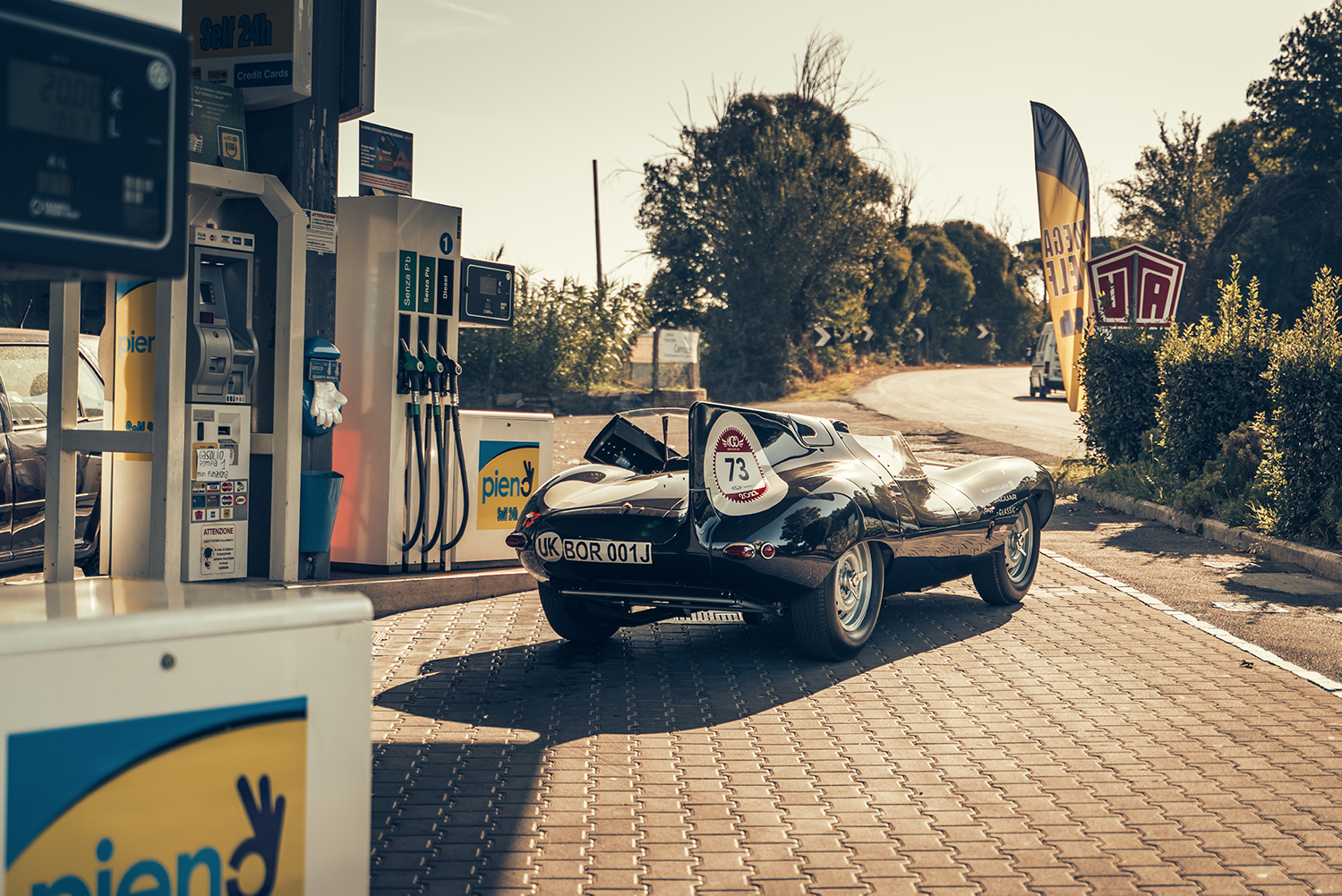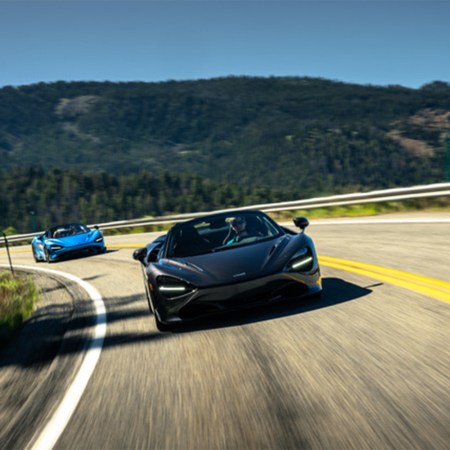
The sprawling, thousand-mile-long Mille Miglia is a bucket list event for gearheads. Based on the infamous Italian road race immortalized by Stirling Moss and Denis Jenkinson’s unbeatable record run in 1955, the current regularity rally brings out hardcore motorists who thrive on long, grueling days of full-tilt driving in rigidly period-correct steeds.

In contrast, the Modena Cento Ore (or Modena 100 Hours) was conceived as a kinder, gentler counterpoint to the iconic rally.
It started life relatively recently, and unlike the Mille Miglia’s strict limits on acceptable vehicles — pre-1957 models or those that ran in the original event — the Modena Cento Ore opens the field to more modern cars. The Competition class features flat-out action on closed courses, and allows vehicles as modern as 1981, while the Regularity class, which rewards consistently timed runs, is generally open to vehicles up to circa 1977, but in some cases all the way to 1985.
At this year’s event, which took place in October, the heralded Porsches and rally-spec Ferrari 308s were joined by insider models from outlier badges like De Tomaso, Iso Rivolta and Sunbeam.
When Jaguar Classic reached out to gauge my interest in the event, I was happy to cite the 2018 edition of the Mille Miglia as one of my qualifications.
In all honesty, I also had to do a Google search for “Modena Cento Ore” to know exactly what it was about. But when I discovered the vehicular thrills this romp through Tuscany, Lazio, Umbria and Emilia-Romagna would offer, I couldn’t confirm my attendance quickly enough.
However, it wasn’t until I got behind the wheel of the exceedingly rare, extremely expensive car Jaguar wanted me to pilot for over 600 miles, from the peninsula of Monte Argentario to Modena, that the true thrill of the Modena Cento Ore hit me.




The Steed: Jaguar D-type Continuation
The Cinderella slipper for my autumnal road rally was Jaguar’s just-launched D-type Continuation, a faithfully executed homage to the mid-century race cars which famously won the 24 Hours of Le Mans three years in a row from 1955 to 1957.
The backstory for this revamped model goes like this: While Jaguar intended to build 100 D-types, only 75 were produced before a factory fire brought the carmaker’s plans to a grinding halt. Nearly seven decades later, the brand’s Classic division is hand-building 25 more D-types — 15 longnose versions with a “tail fin,” and 10 “single hump” shortnose models — to complete the long-abandoned run.
Inside the Concorso d’Eleganza Villa d’Este, the Greatest Car Show You’ve Never Heard Of
Every year, motoring royalty — and their multi-million-dollar masterpieces — convene on the manicured shores of Lake ComoThe production process is painstaking, requiring over 3,000 hours of skilled labor to complete. When all is said and done, the differences between the continuation cars and the originals are negligible, but include a slightly thicker aluminum skin (because the 1950s-era outer layer was notoriously fragile), and the addition of an electric engine cooling fan in order to avert overheating.
In the rally, my D-type would be flanked by a C-type Continuation, a similarly conceived ode to the Le Mans-racing predecessor of the D-type.
While boutique restoration shops have been building high quality D-type homages for years, the factory-sanctioned continuation car is considered the official, authorized version. The fact that Jaguar’s model is also FIA-approved to compete in historic races certainly doesn’t hurt their salability: the D-type Continuation commands a heady starting price of £1.75 million, before taxes, or around $2.1 million U.S. based on current exchange rates.
And I would be driving one across Italy. No pressure.

21st Century Build, 1950s Attitude
While driving a multi-million-dollar car sounds like a significant financial responsibility to bear (and the exposure is certainly real), I found it strangely reassuring that if I were to prang my curvaceous borrowed beauty, at least I wouldn’t be destroying a piece of motoring history if something were to go horribly wrong.
That said, there are a number of glaring reminders that driving this continuation car is just as authentically sketchy as piloting an original D-type, despite the retrofitted racing harness designed to keep you snug against the thin leather seats in the event of a collision. The visceral experience begins at startup: Flip the fuel safety switch, pump the accelerator pedal to prime the three massive Weber carburetors and press the starter button, and the 3.4-liter six-cylinder engine howls to life, spitting pure decibels in bass-heavy anger through the open exhaust pipes.
There’s an incredible immediacy to merely tapping the accelerator. The entirety of this small steel and aluminum structure trembles with life, a giant tachometer recounting engine revs via an elegantly thin needle. As intuitive as the throttle response feels, the trickiest aspect of the D-type by far is its clutch. Not only is the return spring on the left pedal surprisingly strong, but this competition-spec racing clutch also has a narrow engagement point and a quick “bite.” Slip it too much, and the clutch quickly overheats, emitting a pungent odor and an inability to properly shift gears or engage in reverse when necessary; engage too quickly and the engine stalls, forcing you to complete a frantic restart before traffic builds up behind.


Heave the wood-rimmed steering wheel in the general direction you’d like to head, and the Jaguar’s lengthy snout announces your intended trajectory with feline ferocity. The steering slides from heavy to manageable as you pick up speed, and the D-type generally becomes more agreeable the faster it goes, a sensation that’s amplified by the rush of airflow through the cramped cabin. Clink the shifter into one of its four gears, and the knob slides into place like a bolt-action rifle — short, crisp, precise. Gun the throttle, and the acceleration builds up progressively but confidently due to the long gearing. Approach the tail end of the 6,000-rpm crescendo, and the exhaust wails; turn the wheel, and the skinny Dunlops course correct with surprising accuracy.
While the carbureted six-cylinder engine puts out a modest 270 horsepower, that output was enough to win the arduous 24 Hours of Le Mans an incredible three times in a row. The power also feels prodigious thanks to the D-type’s relatively lightweight construction; with less mass to haul around, it leaps forward, changes direction and stops with satisfying force. Though still certainly vintage, the D-type punches above its weight and delivers a stirring driving experience that transcends its 1950s-era hardware.



Pedal to the Metal, From Piazza to Piazza
The D-type cuts an evocative silhouette through the field of road cars and racers from later periods. While the Modena Cento Ore was formed in 2000, it became reinvented when Luigi Orlandini, founder of Canossa Events, acquired it in 2011. “Before, it was just racing,” he told me between sips of juice at a lunch stop. “I started running with a different philosophy.”
For all the entropy that can ensue from Italy’s inherent chaos, the event staff is heroic at bringing everything smoothly together. It takes nearly 800 marshals and staffers to manage the multi-city leapfrog across 600 miles, which includes timed trials along closed sections of road and four destination race circuits along the way: Vallelunga, Autodromo dell’Umbria, Mugello and Autodromo di Modena.
En route, an armada of police officers on motorcycles offer high-speed escorts to any rally-goer willing to follow. Their ability to clear Italian traffic is effortless; drafting on their easy confidence brings a paradoxical thrill, especially since the D-type I’m sharing with Jaguar Classic’s Paul Raynes is so elegantly anathema to their modern Yamaha sport tourers.
The Modena Cento Ore’s nighttime events are diametrically different than the gritty, high-revving drives through the Italian countryside. Thanks to support vans that transport the group’s luggage to each hotel, the evening soirees are gracefully executed opportunities to play dress-up.

The week’s fanciest event is a black-tie gala dinner at Florence’s Teatro della Pergola, a grand opera house founded in 1656 that is every bit as hauntingly beautiful as it sounds. The formal table settings onstage look out at the tiered audience seats, and between courses a spotlit opera singer appears in a box and performs for the crowd.
That flair for the dramatic coupled with an inherent sense of fun is what separates this from other rallies, many of which are bound by tradition. By the time we arrived at the finish line in Modena, we were surprisingly fresh considering the hundreds of miles of spirited, open-air driving that led up to that moment. Having jockeyed in rankings with the C-type, Paul and I finished a close 6th position behind teammates Lyn Woodward and Alistair Sommerville.
However, I suspect the finishing order won’t be top of mind when those four days in the Italian countryside fade into the rearview. I have a feeling the memories that persist will include chasing the sun through the rolling hillside passes, convivial coffee breaks in the remote reaches of Monte Amiata, revving the Jaguar for cheering locals in the quaint piazzas of Bibbiena and Porto Santo Stefano, and the inscrutable joy of piloting a beautiful thoroughbred through a country that still gives a damn about gas-powered motoring despite the inexorable ways of the world.
All photographs by Olgun Kordal, courtesy of Jaguar Classic
![Journalist Basem Wasef [second from left] with fellow Jaguar Classic drivers at the 2023 Modena Cento Ore](https://www.insidehook.com/wp-content/uploads/2023/11/basem-wasef-modena-cento-ore-2.jpg?w=1499&resize=1499%2C1001)




